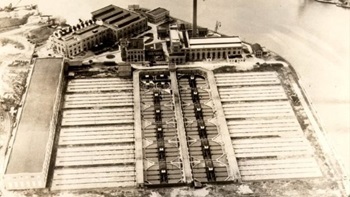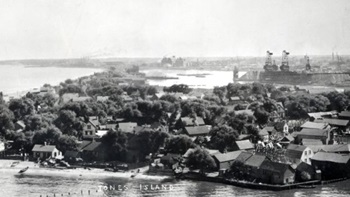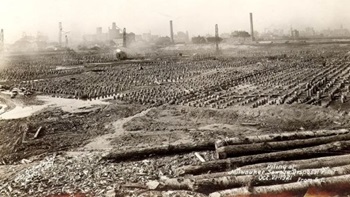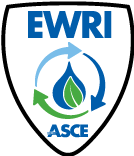
The Jones Island plant was one of the first sewage treatment plants in the United States to successfully employ the activated sludge treatment process. When it came on line in 1926, it was the largest such plant in the world. Jones Island was the first treatment facility to economically dispose of recovered sludge by producing organic fertilizer, Milorganite. Milorganite has been continually produced for 98 years.
The first sewers in Milwaukee, constructed in the late 1800s were combined sewers, carrying sewage and stormwater directly to rivers and Lake Michigan. Sewer construction was in its infancy and the prevailing public attitude was that waterways were free to use for waste disposal.

As a stopgap measure to alleviate the resulting putrid conditions in Milwaukee's rivers, two flushing tunnels - one built on the northern side in 1888 and one built on the southern side in 1907 – pumped large volumes of Lake Michigan water into the Milwaukee and Kinnickinnic Rivers. Tunnels were not sufficient to eliminate the problem. Untreated sewage contaminated Nearshore Lake Michigan, a source of drinking water, contributing to a deadly typhoid scare in 1909.
The City of Milwaukee recognized the adverse effects of polluted rivers and brought in experts to design a solution. The Sewerage Commission of the City of Milwaukee was established in 1913, and the arduous job of designing and building a sewage disposal system began.

In 1914, the Commission experimented with a new approach for wastewater treatment involving microscopic organisms - activated sludge. The Commission authorized a pilot plant on the tip of Jones Island consisting of 11 reinforced concrete, 30-ft diameter tanks, 13 ft deep. Eight tanks were for aeration of the mixed liquor, two were for aeration of the activated sludge, and one was for final sedimentation. Fine bubble diffuser (filtros) plates lined the bottom of the chambers. The sedimentation tank had a hopper bottom to collect the settled sludge.
The Commission’s consultant, Harrison Eddy, encouraged the development of a permanent activated sludge facility as the most economical method for treating Milwaukee’s sewage. Eddy also offered the idea of manufacturing fertilizer as a means to offset capital and operating costs. The Jones Island Sewage Plant replaced the pilot plant in 1925. The new plant employed the innovative waste activated sludge process and turned a waste into a resource. Rather than disposing the plentiful, nutrient-rich microbes into landfills, Milorganite fertilizer arrived on the market, just as Eddy suggested.

Although construction was complete in 1925, work continued on the dewatering process through 1927, and the plant was not officially declared operational until 1 January 1929. The event was of such engineering importance that Engineering News-Record had as it cover story the opening in the 9 July 1925 issue.
In August 1974, ASCE designated the plant a National Historic Civil Engineering. During the dedication ceremony, then ASCE President Charles Yoder declared, “the Jones Island plant was America's earliest large scale activated sludge type municipal sewage treatment facility. Construction of the plant started in 1919 and, in its time, was a major improvement over existing systems. The successful operation of Milwaukee's…plant has led the way for many other…municipalities” (ASCE Press release, 1974).
In 1979, the Jones Island plant was listed on the National Register of Historic Places because of its historic leadership in developing what has become a leading sewage treatment method throughout the world.
Many thanks to the Milwaukee Metropolitan Sewage District for this history and photo permissions. A full history of the Jones Island Plant is available here.


